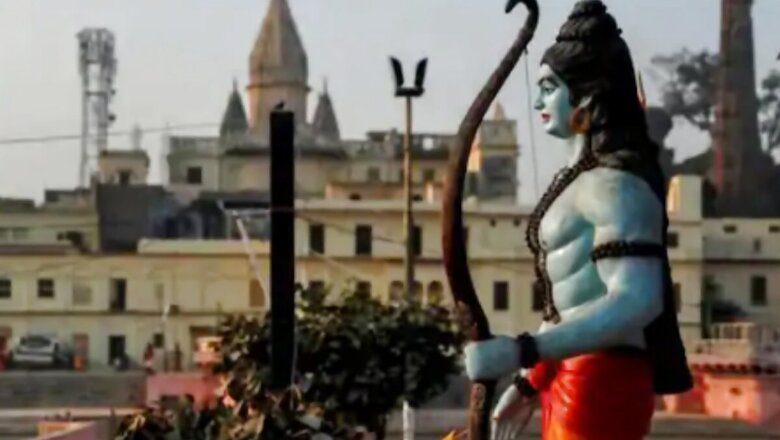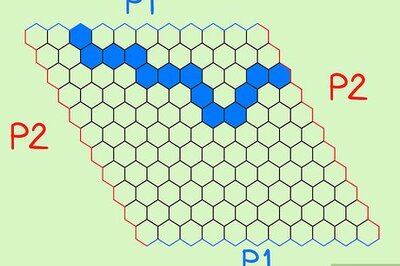
views
Last year, on August 5, the Narendra Modi government had sent political temperatures soaring by abrogating sections of Article 370 of the Constitution, ending the special status to the-then state of Jammu and Kashmir. Now, a year, later on the same date, Prime Minister Modi will again be creating history by breaking the ground for the Ram temple in Ayodhya at the spot where the Babri Masjid was pulled down on December 6, 1992. When the construction is complete, it will mark the fulfilment of the second major agenda on the ruling Bharatiya Janata Party’s list of promises to its voters.
A question, however, arises: what does the Bhumi Pujan for the construction of the Ram temple mean for the BJP-RSS political strategy ahead? Will it mark an end to the politics on the issue of Ram Mandir, or open up new roads for the ideology of Hindutva, one that further empowers its electoral-political gains?
Nine months ago, when the Supreme Court in a historic judgement awarded the disputed land of the Ram Janmabhoomi-Babri Masjid controversy in favour of the Hindu litigants, it concluded one of the longest legal battles in independent India. Muslims too have generally accepted the verdict and the nation as a whole looks geared up to move forward.
Now with the date for Bhumi Pujan approaching and the Prime Minister all set to reach Ayodhya, the focus is back on the issue. However, at the moment, amid a raging battle against the coronanavirus pandemic, mass hysteria on the issue seems to be some distance away.
But that will not be for long. A senior BJP functionary from Uttar Pradesh, not willing to be quoted, said, “In the time to come, the party will surely look for mass mobilisation for the Ram temple. If in the past it was kar seva for removing the disputed structure, in future we will look for ways to build a mass emotional connect, with the construction of the temple.”
Glimpses of what is expected to come can already be seen in the grand preparations that are underway for the August 5 Bhoomi Pujan. Ayodhya is being readied on an unprecedented scale for the event. Paintings are being carefully inked on pillars and walls, roads repaired, and ghats of river Sarayu being cleaned up. The idea is to showcase Ayodhya and the Ram temple as a new attraction in the people’s imagination.
Yogi Adityanath, the chief minister of Uttar Pradesh, has already given a call for Diwali-like celebrations in the temple town. The target is to light around 2 lakh earthen diyas (lamps) on the night of Bhumi Pujan. The Vishva Hindu Parishad (VHP) has urged devotees across the country to watch the Bhumi Pujan live and light a diya at their home.
The idea clearly is to make an emotional connect with Hindus during the Covid-19 crisis when a large gathering at the event is not a possibility. So what about the future? VHP spokesperson Sharad Sharma said, “The Ram Mandir movement has been a reflection of the collective consciousness of the Hindus, therefore the temple construction too is the focus of our collective will. In times to come, we will see how to connect the masses with the upcoming temple."
Sharma also said, “Though unlike the past, when kar seva was meant to remove the obstacles, now it can’t be done in the same way for the construction because it is more technical work, which needs experts. But on the level of social connect, a lot can be done and will be done.”
Sources say the VHP is already looking at the possibility of felicitating the kar sevaks and the family members of those killed in the police firing of 1990 later this year when the coronavirus crisis would probably be over.
TEMPLE TO BRIDGE CASTE DIVIDE?
A senior journalist, presently an important part of Team Yogi in Uttar Pradesh, said, “ Ram Mandir has been the biggest symbol of Hindutva in the past. Lord Ram is revered and seen as someone who had also stood against the caste system and social divide. In the past, the Ram temple movement had seen the most enthusiastic participation from the Hindu Dalit and Backward castes. The construction, therefore, will cut ice across the caste spectrum.”
So how can the upcoming Ram temple be the emblem of consolidation across castes? One strong argument is the symbolism of the visuals. Temple supporters point out that in 1989 it was a man from the Dalit community who was chosen to place the first brick for the shilanyas of the Ram temple. The man was Kameshwar Choupal, a VHP activist from Bihar, who is now a member of the 'Ram Janmabhoomi Teerth Kshetra Trust’, the body which is supervising the construction work. Kameshwar was a calculated choice at the time. The idea was to form a strong connect with the deprived castes.
Now, 31 years later, as Prime Minister Modi will lay the first brick for the foundation of the temple, the caste equations will again be addressed. Though both for the BJP and RSS, on the face of it, Modi will represent the collective will of 130 crore Indians, on the ground it will still be defined by the caste realities. The PM’s backward caste identity will also not go unnoticed, and will also be played upon silently in the future.
For the BJP, using Modi’s caste identity is anyway nothing new. In the run-up to the 2014 general elections, Modi as the PM candidate had himself touched upon his OBC identity.
Senior journalist Brajesh Shukla is, however, not too convinced by this argument. “Ram Mandir can no longer be an issue of electoral prominence. The euphoria of Hindutva around the issue had ebbed since the demolition of the Babri Masjid in 1992. Immediately after the demolition, in assembly elections of four states in 1993, the BJP had failed to return to power.”
“Ram Mandir will now be more like one out of several dishes on the platter and a reminder of the fact that the BJP has delivered a long-mentioned electoral promise,” Shukla added.
Lucknow-based renowned sociologist Dr Pradeep Sharma of the Shia PG College echoes similar sentiments. “The country as a whole has moved forward. Though the ideology of Hindutva has gained more roots over the years, the issues at hand have changed. For the generation born post 1992, Ram Mandir no longer holds a similar sentiment. In the recent past, abrogation of sections of Article 370 in Kashmir and amendment of the citizenship rules had seen a bigger frenzy and uproar amid the Hindutva brigade, rather than the present temple saga."




















Comments
0 comment